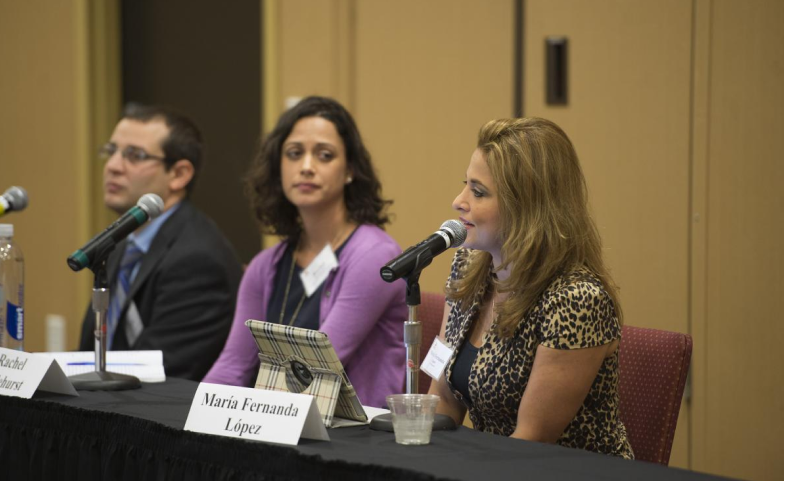Children don’t have to lose one language to learn another language. That’s the theory behind dual-language programs, which are replacing traditional English as a second language (ESL) courses in schools across the country.
In a panel moderated by María Fernanda López of Univision Miami at EWA’s second annual Spanish-Language Media Convening in Orlando, Nelson Flores, an assistant professor at the University of Pennsylvania, and Rachel Hazlehurst, a literacy and language specialist at Camino Nuevo Charter Academy, discussed the changing program models for English-language learners and the benefits of dual-language instruction.
“People think learning two languages will confuse the kids,” Flores said. “That’s not true.”
But it is a valid concern, Flores added, and there is a need to educate parents about the research. The benefits of learning Spanish range from cultural — being able to speak with extended family members and travel throughout Latin America — to cognitive — actually having higher-performing brains. Bilingual adults also have more opportunities in the workplace.
There are several program models used in U.S. schools with English-language learners. Transitional bilingual programs promote the temporary use of Spanish to help students learn English. While Spanish may be used in the classroom at first, the goal is to move to full-time English instruction within two or three years, Flores said.
Dual-language programs, on the other hand, promote bilingualism and biliteracy in English and Spanish, or whatever other language is used. In these programs, students get academic instruction in both languages for as long as they are in the school. Research by Virginia P. Collier and Wayne P. Thomas has found dual-language programs to be the only ones that can close the achievement gap for English-language learners.
This type of program is the sort that the Camino Nuevo charter schools offer in Los Angeles. In addition to aiming to help their students become bilingual and biliterate, and perform at or above grade level, Hazlehurst said the schools hope to foster positive self-esteem among students, pride in their heritage, and a respect of other cultures.
Camino Nuevo has one of very few dual-language programs in Los Angeles because of a California law that requires public schools to teach in English a majority of the school day. “The only way we can have this program is because we’re a charter school,” Hazlehurst said.
Camino Nuevo’s program starts in kindergarten with 80 percent of academic instruction in Spanish, then it slowly flips so English language instruction is up to 70 percent by fifth grade. While the research is clear on the benefits to students of such a program, Hazlehurst said finding qualified teachers to lead these classrooms continues to be a challenge.
